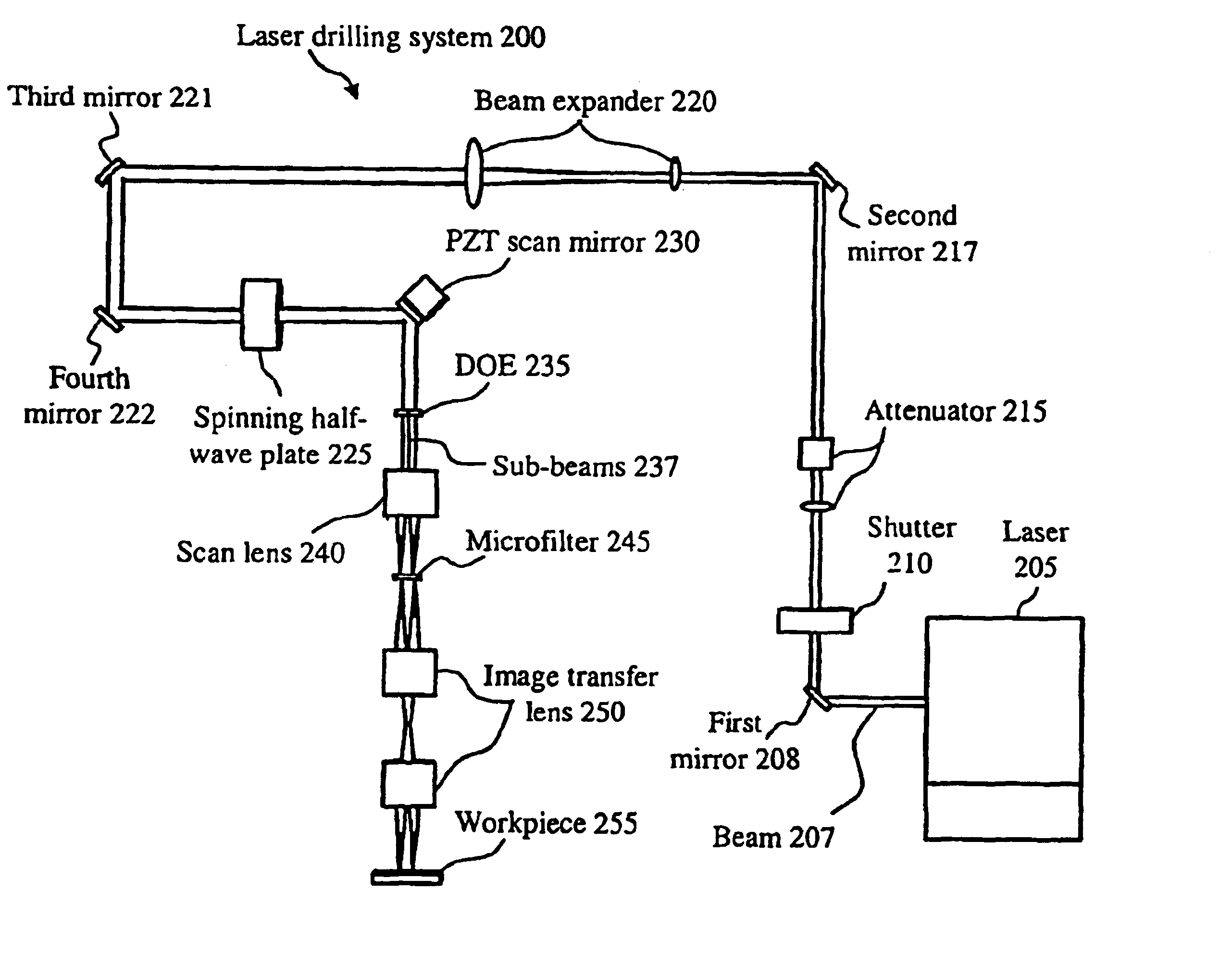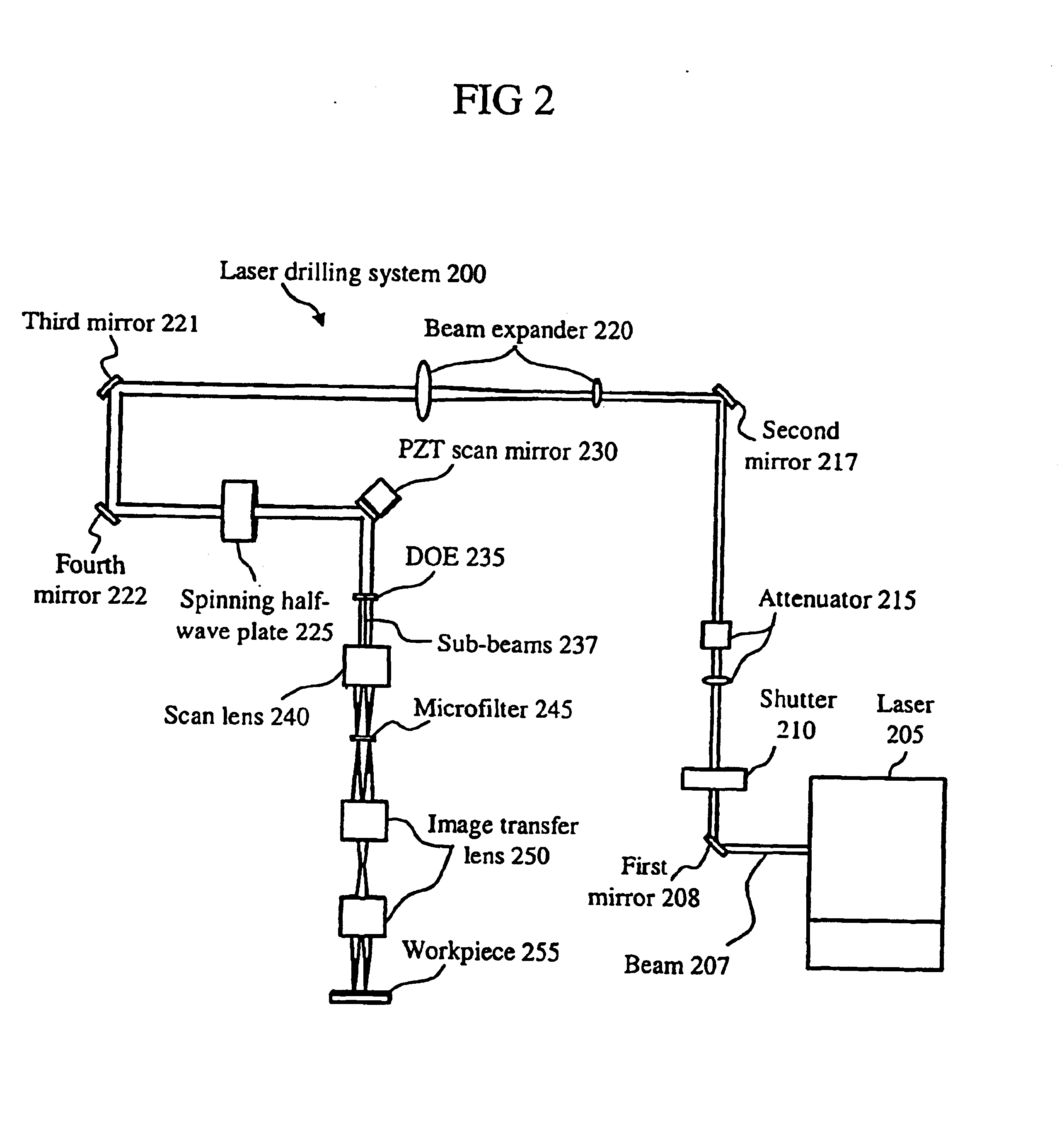Method of laser milling using constant tool path algorithm
a constant tool path and laser milling technology, applied in the direction of manufacturing tools, electrical programme control, welding/soldering/cutting articles, etc., can solve the problems of low tolerance for error, waste of time and energy, and smaller tolerances for finished products in laser micromachining
- Summary
- Abstract
- Description
- Claims
- Application Information
AI Technical Summary
Benefits of technology
Problems solved by technology
Method used
Image
Examples
Embodiment Construction
[0021]The following description of the preferred embodiment(s) is merely exemplary in nature and is in no way intended to limit the invention, its application, or uses.
[0022]The present invention is a method of milling using a constant tool path algorithm (or alternatively, “milling algorithm”) that can be used to produce holes in a consistent, repeatable process. Further, the process can be used to parallel-process a plurality of milled holes simultaneously.
[0023]As noted above, an algorithmic approach proves mildly successful, in that a desired shape is produced using a constant angular velocity and tool pitch. As also noted above, this process does not compensate for the spacing of exposure steps generated near the center of the hole.
[0024]Referring to FIG. 1, a constant angular velocity tool path (tool path) 100 includes an initial voltage at the outer contour (Vmax) 110, a plurality of laser exposure steps 120, and the spacing of tool pitch 130. Using this approach, a large num...
PUM
| Property | Measurement | Unit |
|---|---|---|
| Fraction | aaaaa | aaaaa |
| Fraction | aaaaa | aaaaa |
| Fraction | aaaaa | aaaaa |
Abstract
Description
Claims
Application Information
 Login to View More
Login to View More - R&D
- Intellectual Property
- Life Sciences
- Materials
- Tech Scout
- Unparalleled Data Quality
- Higher Quality Content
- 60% Fewer Hallucinations
Browse by: Latest US Patents, China's latest patents, Technical Efficacy Thesaurus, Application Domain, Technology Topic, Popular Technical Reports.
© 2025 PatSnap. All rights reserved.Legal|Privacy policy|Modern Slavery Act Transparency Statement|Sitemap|About US| Contact US: help@patsnap.com



